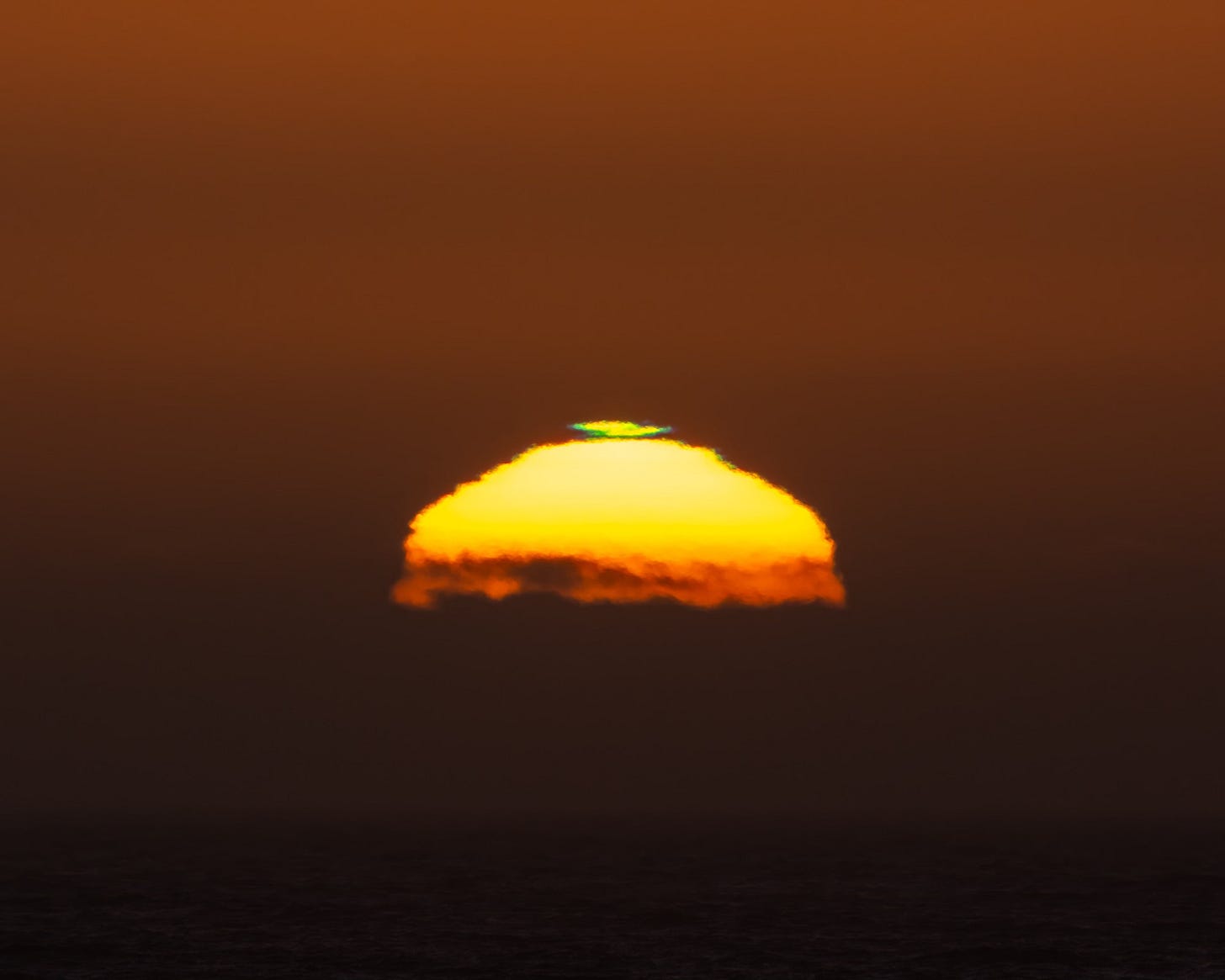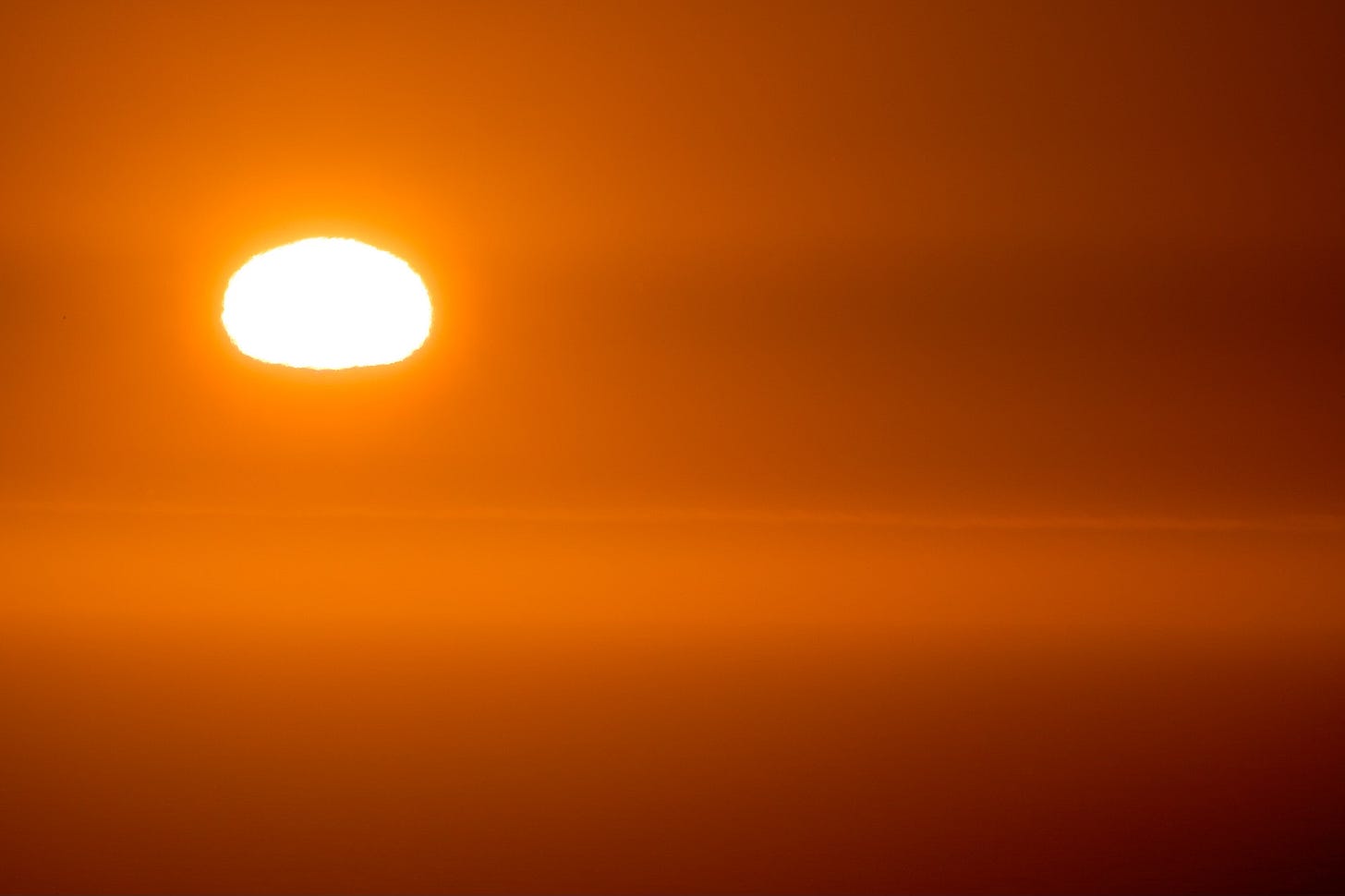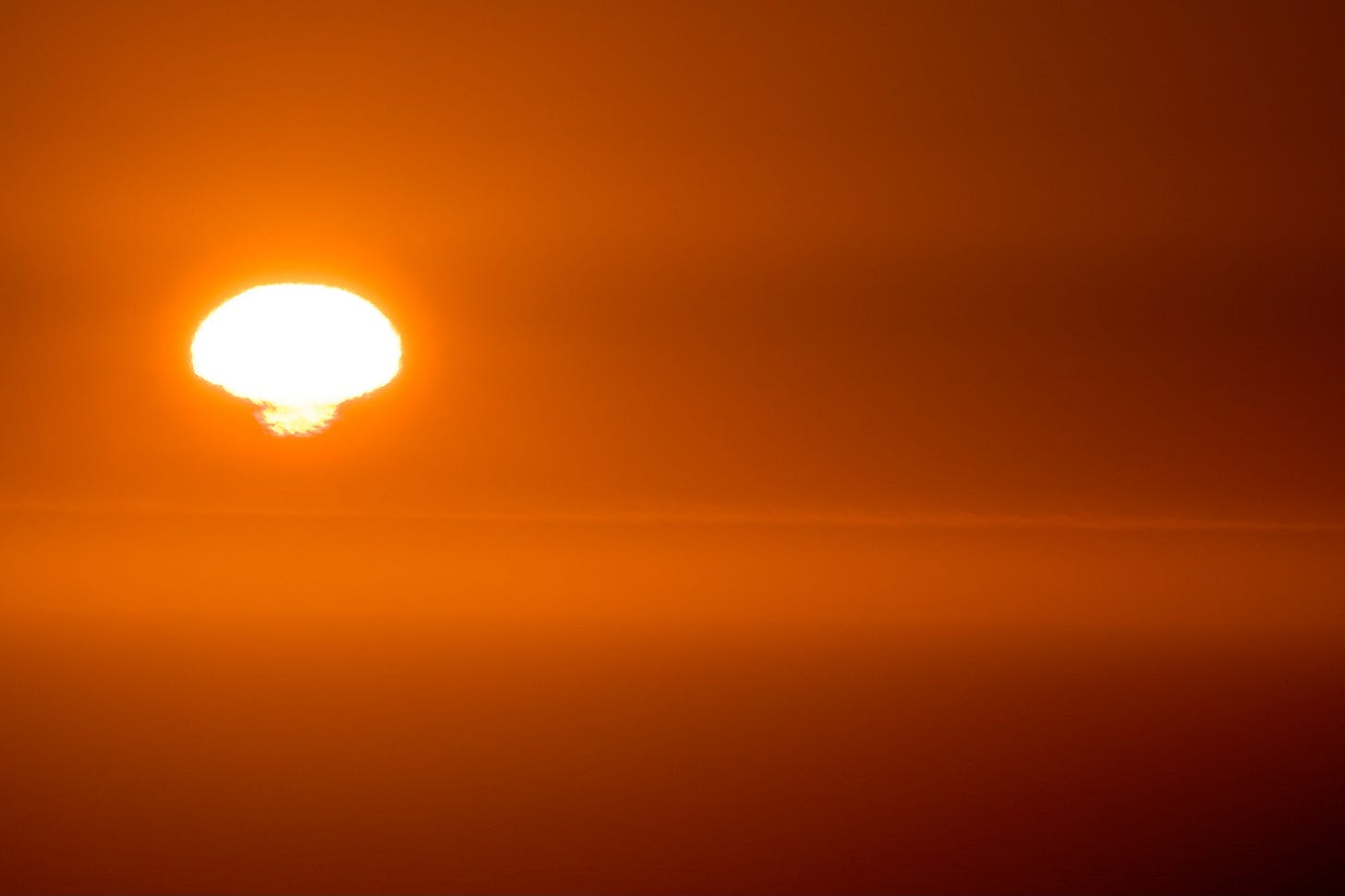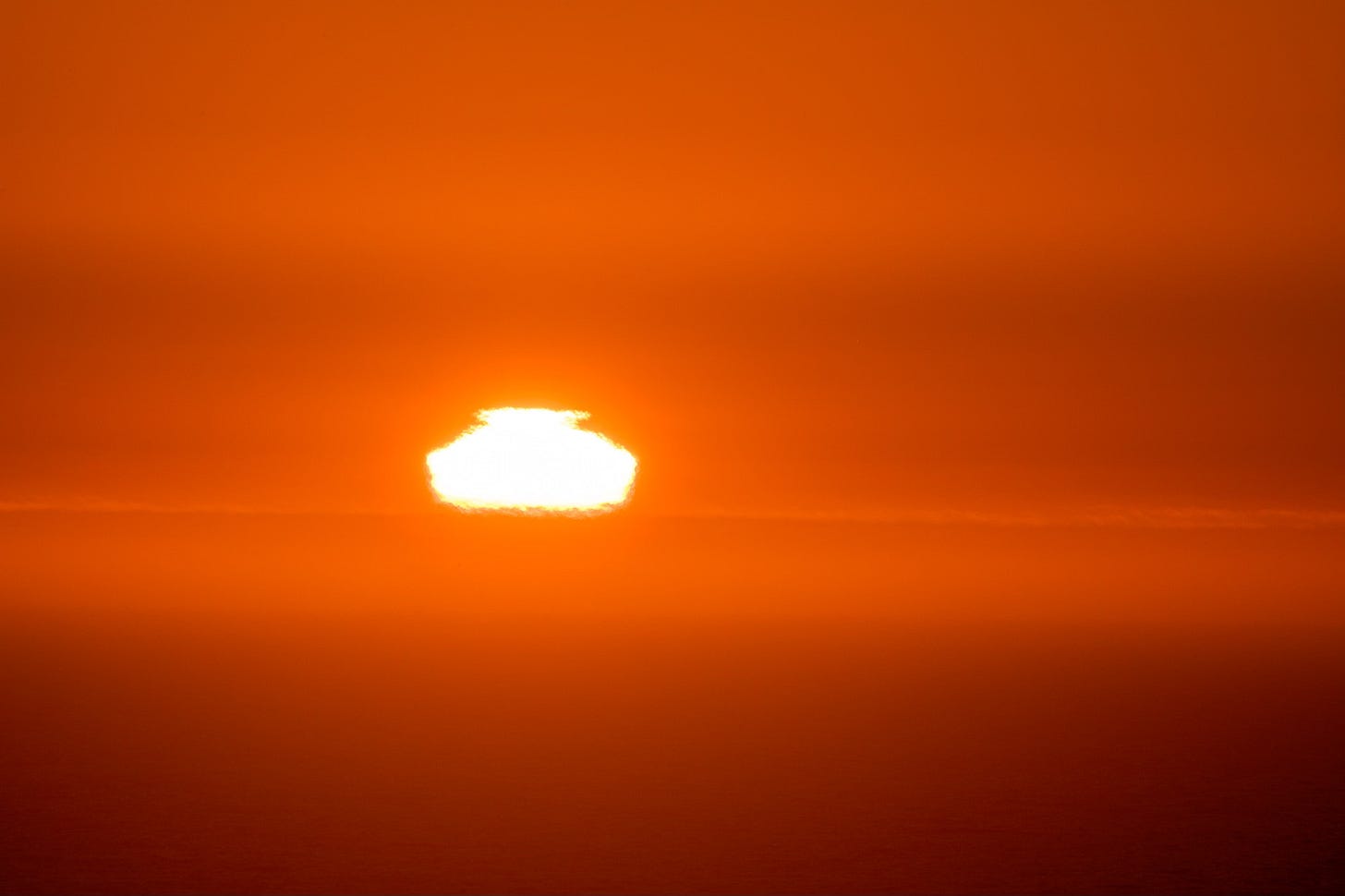Over the July 4th weekend we were at the Oregon coast. We used to live in the Portland, Oregon area years ago and made frequent trips to the coast with our daughters where we’ve seen all kinds of weather. We’ve been there on hot summer days when you couldn't fly a kite because the air wasn’t moving. We’ve been there in fog, low clouds, howling wind, driving rain, drizzle, mist, and wonderful blue sky days with a steady wind to send the kite soaring. We’ve seen it all, except, exceptionally clear skies extending a thousand miles (1600 km) to the west. If there aren’t low clouds and fog on the coast, they are most likely just a few miles offshore. But this year, 2024, over the July 4th weekend, the skies were clear, and I mean clear. We were there for a few days to experience some wonderful sunsets.
A large high pressure system had set up along the coast and there were no clouds, none, as far as the eye could see. For a sunset, what this meant was the sun would be setting very close to the horizon, unlike its usual position hiding behind clouds just 10 or 20 miles (≈15 to 30 km) off the coast.
The picture above was taken on our first evening on the coast from the walkway just above the rocks on the beach. I don’t recall a single time visiting the Oregon coast where I had seen the sun so close to the true horizon. And on this occasion, a tinge of green on the upper limb of the sun was visible. The green flash. Pretty exciting for a guy that first learned about the green flash nearly 50 years ago and had never seen one prior to this day.
On the following day we again had a clear unobstructed view to the west with no clouds visible. This time I though how about we travel just a few miles down the road to where the road climbs to a spot about 250 ft (76 m) above the ocean surface and see what kind of view we would get. And I had an idea. At this latitude, the sun descends towards the horizon at about a 50 deg angle. So if I wanted to make a time lapse image, the sun would not stay in the frame as it set. So I thought I’d use my star tracker to have my camera follow the sun and pan across the horizon as the sun set, keeping the sun centered in the frame. Well, remember a previous post Success, Failure, Try I must? Yea, my attempt didn’t quite work as planned. I panned the camera faster than the sun was moving, so I had to stop the pan, let the sun catch up, and start it again. Not the greatest movement for a good time lapse. I did learn from my mistake and the following night I managed to get a nearly perfect time lapse with the sun moving straight down in the frame. But the conditions were nothing like this night, something pretty extraordinary happened that I had not seen before.
While the environment seemed similar to the previous day, no clouds, strong northwest winds, the temperature profile of the air above the ocean had changed. But I had no way of knowing this. All seemed to be exactly as the previous day as the sun approached the horizon. The photo below was taken about 7 minutes before “official” sunset. Looks pretty normal, mostly round, a bit of flattening on the bottom, but all in all, what you would expect to see 7 minutes before sunset.
Then for the next 2 minutes, the bottom portion of the sun didn’t move, it was flattening out.
At that point in time, about 4 minutes before sunset, the bottom portion of the sun popped out of the bottom layer and started pushing downward in a bulge.
Then, the bottom of the sun was getting flattened again just 2 minutes before sunset
Now with just 1 minute until sunset, the sun touched what appeared to be the top of a distant cloud layer, except…
The sun didn’t set. It kept distorting and changing shape as it sank lower, and lower. The layer above what I thought might be a cloud layer was most likely the top of a temperature inversion. This was bending the light rays of the sun quite significantly. The following is the tail end of the time lapse I attempted but failed at. The sun ended up being visible for nearly 15 minutes after the “official” sunset. Notice how the sun just stayed in that small layer just above the ocean surface for the longest time at the end of the sunset. There is an obvious reflection of the sun on the oceans surface very low, but there is a narrow layer where the sun stayed, and stayed, and stayed. This was an absolutely amazing sight to behold sitting on a bluff 250 feet above the Pacific Ocean, watching the sunset take a good 15 minutes longer than I had ever experienced.
Yes, the Oregon coast has more than just great sunsets. But this post has gone on long enough so I’ll post more about the Oregon coast in the future. If you have any comments, questions, criticism, or something you’d like to share about this post, sunsets, the green flash, or anything else related to sitting on a bluff watching the sunset and contemplating your place in the universe…











Detailed observation! We were also on the OR coast at the same time. But we were so busy with family that the setting sun was showing off without us. Glad you caught it!
I love sunsets/sunrises and this is a beautiful one! Not everything goes to plan but this turned out really well and I liked the included science about the picture.